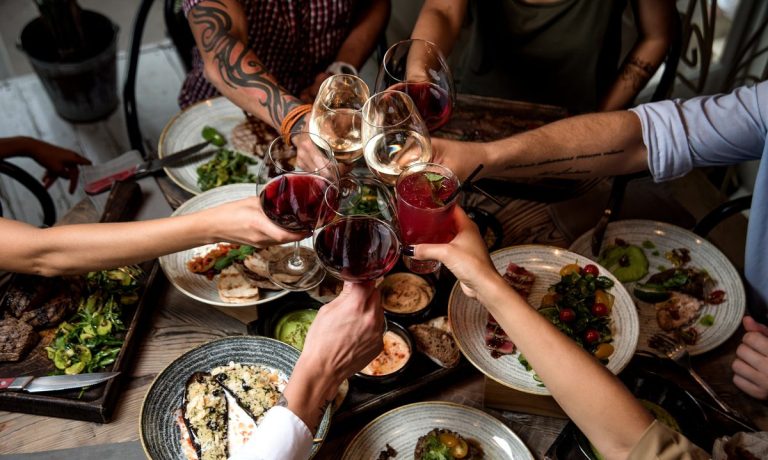Independent Restaurants Rely on Omnichannel Creativity to Navigate Pandemic Challenges

While the restaurant industry has come a long way since the early months of the pandemic, the challenges occasioned by the outbreak are far from over. Independent restaurants, without the resources that major chains have at their disposal, have been particularly vulnerable to these difficulties.
Periodic variant surges combined with ongoing labor, supply chain and pricing challenges have many independents facing an uncertain future, although rapid innovation and ongoing demand temper these challenges with a sense of optimism.
See also: Despite Economic Challenges, Main Street Restaurants Invest in Innovation in 2022
“The hardest part is when there feels to be a bit of randomness [with occupancy],” Jacob Cohen, co-owner and managing partner of upscale New York City Italian restaurant Dell’anima, told PYMNTS in an interview. “There are days when we know it is obviously going to be busy or slow, but there are other days when we feel slightly blindsided in both directions. And the hardest part of that is figuring out staffing levels. We want our employees sitting around doing nothing when it is slow, but at the same time, we don’t want our level of hospitality to be sacrificed when it gets busy.”
U.S. Bureau of Labor Statistics data show that there has been significant recovery in the restaurant industry’s total workforce, although numbers remain well below pre-pandemic levels. In February, the number of food services and drinking places (i.e., restaurant and bar) employees was up 14% from February 2021 and down just 7% from February 2020. However, these figures do not account for the increase in demand for restaurant meals occasioned by the rise in digital ordering.
Filling the Seats
Dell’anima has been using digital occupancy tools from New York City-based restaurant technology company Seated to help keep the restaurant fuller. The company allows restaurants to offer rewards that vary based on the time of day, and in February, the ResTech company announced the launch of its Restaurant Occupancy Calculator.
“Seated has been vital in incentivizing people to dine with us during off-peak hours,” said Cohen. “We think Seated is a great way to get people through the door, and from there we can take over.”
Restaurants are paying more attention to the omnichannel experience they offer, according to data from PYMNTS’ Restaurant Friction Index, created collaboration with Paytronix. The study, which drew from a survey more than 500 restaurant managers, found that the area that the greatest number of managers consider “very” or “extremely” important to their innovation strategies is the integration of their physical and digital presence.
Read more: New Data Show Digital Loyalty Programs Are Key Differentiator for Top-Performing Restaurants
In addition to using digital offers to boost the number of seats filled, Dell’anima also leverages its menu to bring in customers at off-hours.
“We have … been active in trying to create a menu that has options for all of the dayparts — whether it is lunch items, bar snacks during the afternoon or new specials to get people to come back for dinner,” Cohen said.
A Foot in the Door
“Throughout the pandemic, … we needed to get creative and really keep our ear to the ground to see what our guests wanted,” Cohen said. “For example, we started selling our sauces and uncooked pasta to make at home.”
Pivoting to packaged foods was a popular strategy for restaurants during the most difficult months of the pandemics. While some canned their sauces and bottled their signature spice mixes, others began selling groceries or offering uncooked versions of their dishes as meal kits.
See more: Restaurants Turn to Grocery and Meal Kits to Survive
“There has to be something special about a restaurant in order for it to be successful in the [consumer-packaged goods (CPG)] space, whether it’s an accredited chef, the history and legacy, reputation for quality food, etc.,” Carbone Fine Food CEO Eric Skae told PYMNTS in an April interview, discussing New York City restaurant Carbone’s move into selling consumer-packaged sauces.
Read more: Spurred by Pandemic, Restaurants Leverage Their Brands to Sell Packaged Goods
The Comeback
While the restaurant workforce may not have recovered completely, sales are actually higher than they were pre-pandemic. According to U.S. Census Bureau data on advance monthly sales at food services and drinking places in January, the most recent month on record, seasonally adjusted bar and restaurant sales were up 27% over 2021 levels and even up 9% from January 2020.
“We have … learned a ton during the pandemic regarding what our guests are looking for and also [regarding] running a more efficient business,” Cohen said, specifying that the restaurant has gained new insight into labor levels, spending and customer acquisition and retention. “We plan to take the things that we learned to be more successful than ever when occupancy levels return to our historical numbers.”



